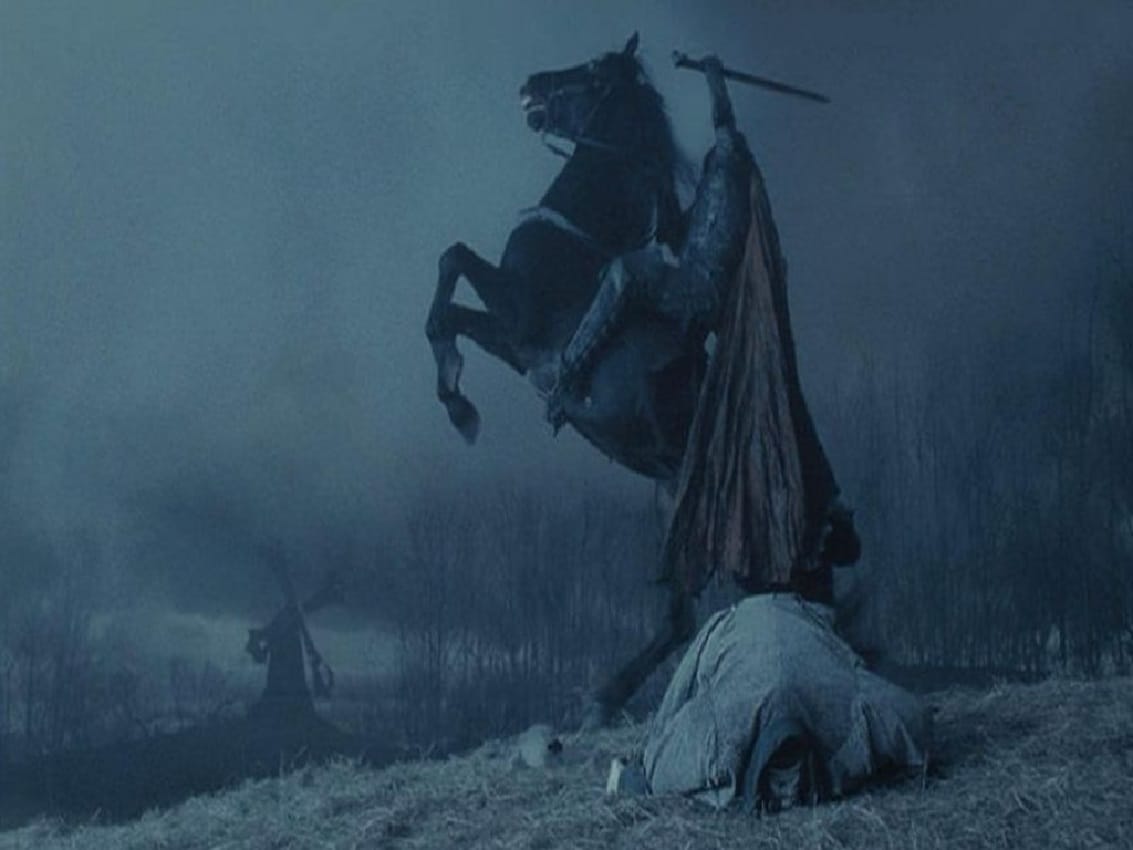
Legend of Sleepy Hallow essay
“The Legend Of Sleepy Hollow” by Washington Irving is outstanding representative of short story genre. The most interesting about this literature work is the hidden author’s message.
Ambiguity of main idea forces us to answer the question about core idea of this short story. This question provides the option of several reasonable thoughts generating. However,I’m going to prove that the censure of Middle Age’s way of thinking (philosophy, beliefs) censureis placed to the center of “The Legend Of Sleepy Hollow”.
At first, let’s remind that “The Legend Of Sleepy Hollow” tells us about after War for Independence time. The time of Enlightenment principles adaptation and Middle Age’s beliefs eradication – the time of changing eras. Now, call to your mind – what are the main synonyms of Middle Age’s philosophy? Stagnation, irrational biases, scholastic fears, denial of empirical knowledge and collapse are commonly adopted associations. As civilized person, Washington Irving had the same view definitely. Being clear with this thought, let’s go directly to the story. Obviously, no one will deny that symbolism is the essential part of “The Legend Of Sleepy Hollow”. Thereby, drawing analogues is to the point. The first quote tells us about the valley of European settlers, as readers meet it at the first time: “There is a little valley or rather lap of land among high hills, which is one of the quietest places in the whole world. A small brook glides through it, with just murmur enough to lull one to repose; and the occasional whistle of a quail or tapping of a woodpecker is almost the only sound that ever breaks in upon the uniform tranquillity”(Washington, 2). Without a doubt, this quote was used to emphasize the nature of Middle Age philosophy. “High hills” can be perceived as scholastic beliefs, which do not let new and fresh views of Enlightenment in. “Quietness ” can be compared to stagnation. Then, the author tells us about people who lived there: “Certain it is, the place still continues under the sway of some witching power…. People are given to all kinds of marvelous beliefs; are subject to trances and visions, and frequently see strange sights, and hear music and voices in the air”(Washington, 3). To take more supports, let’s remind Ichabod Crane’s character. What was his favorite book? – “History of New England Witchcraft”. What was his golden maxim? – “Spare the rod and spoil the child” (Washington, 5). Seemingly, these quotes do not feel need in explanation as analogues between valley and Middle Age way of thinking, carried by Dutch settlers, is obvious.
Author’s intention for Enlightenment and Middle Age contrasting can be manifested through main characters comparison. It was said a little about Ichabod Crane before. To add, this man is described as poor, weak, cure and a kind of greedy person. Furthermore, let’s remind his way of life, fully intended for crave of easy money. In this order, this character looks like the symbol of Church, which played important role at Middle Age philosophy. On the other hand, we meet absolutely different Brom Bones, which appeared in next way: “The hero of the country round which rang with his feats of strength and hardihood. He was broad-shouldered and double-jointed, with short curly black hair, and a bluff but not unpleasant countenance, having a mingled air of fun and arrogance From his Herculean frame and great powers of limb…”(Washington, 12). Direct analogues to Enlightenment hardly can be drawn, but the main concept is clear absolutely. The fresh, powerful, cheerful, strong, decisive knight is contrasted to weak, decrepit, crafty and greedy figure of neurasthenic teacher. Therefore, general author’s thought is understandable.
At last, let’s take some look at author’s sarcasm about obsolete life principles. The best evidence to this is the final scene when Ichabod Crane’s disappearance was noticed. Remember, when people came to bank following the traces, they found just some pumpkin, wet book and notes. Than we read the next words: “These magic books and the poetic scrawl were forthwith consigned to the flames by Hans Van Ripper; who, from that time forward, determined to send his children no more to school; observing that he never knew any good come of this same reading and writing” (Washington, 20). Stupid and unreasonable thought is the best to show out Middle Age’s ignorance. Do you remember what conclusions were made by citizens about accident? The involvement of Headless Horseman raised any doubt and was commonly recognized. This part was used to emphasize ridicule Middle Age’s shallowness. To add, let’s remind next author’s words about the valley at the beginning of the story: “If ever I should wish for a retreat whither I might steal from the world and its distractions, and dream quietly away the remnant of a troubled life, I know of none more promising than this little valley”(Washington, 1). This sarcastic quote is relevant to show out “land of nod” Middle Age’s nature. A kind of kingdom, which prefers to stay away from real objectivities.
To conclude, symbolism of “The Legend Of Sleepy Hollow” is the strongest part considerably. Little knowledge of some historical background enables readers for impressive conclusions making. Rather multiple and simple figures are used to bring general author’s idea about philosophical challenges of that time. By showing weak points of scholastic beliefs, he sings an ode to the perspectives of Enlightenment. This approach worth to be calledthe main point of analyzed work as it looks fully supported.

